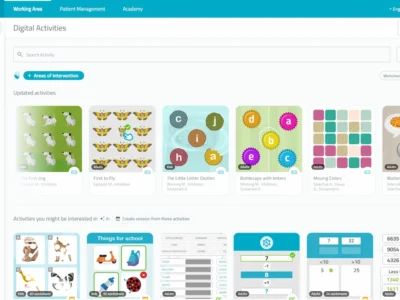Neuropsychologist Cristina Martínez de Toda talks to us about What is resilience? and the characteristics of resilient people.
“I have been a fortunate man; in life nothing has been easy for me.”
Sigmund Freud
In life sooner or later we all face difficult moments: illness or the death of a loved one, a romantic breakup, financial problems or job loss, personal crises…
Resilience is the ability we humans have to face an adverse situation, adapt with flexibility, and emerge stronger from it.
Resilience is the ability to accept that there is no hard life, only difficult moments.
Characteristics of resilient people
There is a subtle difference between resilience and resistance. The latter is about remaining unscathed, with a passive kind of resistance. In resilience, the person is not like a rock that withstands the blows. When we talk about resilience, the person is like bamboo, flexible, adapting to the adverse situation and managing to transcend.
Resilient people are what they are by what they overcome, not by what they achieve.
The resilient people allow themselves to recover, they do not let themselves be defeated, they manage pressure and overcome sadness. They are capable of growing despite problems, and living with a sense of humor. They learn from mistakes and face problems. They know how to control negative emotions and activate their skills in difficult moments.
An example of group resilience
We all know the tragedy that shook New York, United States, on the fateful September 11 of 2001. The American population came together politically and socially in a way never seen before. This cohesive resilience is an admirable example of how a group of people, and even a nation, can unite and be reborn from its ashes after disaster, and emerge transformed.
An example of individual resilience
Viktor Frankl during World War II was a prisoner in a concentration camp along with his family and his wife. He was the only survivor. After being liberated, wrote the book Man’s Search for Meaning (1946).
In this book he recounts the horrifying situations and inhuman conditions he had to endure while there, and makes an exquisite analysis of the human condition, stating that those who lost the sense of meaning in life had lower chances of surviving.

Subscribe
to our
Newsletter
How to work on resilience?
According to psychologist Edith H. Grotberg, there are factors that help promote resilience, and these can be categorized into the following dimensions:
- The internal dimension (inner strength),
- the external dimension (external support factors),
- the social dimension (interpersonal factors).

The pillars of individual resilience (Wolin&Wolin, 1993)
- Introspection: understood as the art of asking and questioning oneself, of conversing and giving oneself an honest answer;
- Independence: understood as knowing how to set boundaries between oneself and circumstances. It also refers to the ability to maintain emotional and physical distance;
- the ability to relate: establishing bonds with other people. It consists of balancing the need for affection with the attitude of giving oneself to others,
- Initiative: the enjoyment of challenging oneself and putting oneself to the test;
- Humor: to find the balance between comedy and tragedy,
- Creativity: the ability to open the mind to new possibilities;
- Morality: understood as the desire for the well-being of all human beings and the ability to commit ourselves to this value.
The path of resilience
The APA (American Psychological Association), after the 9/11 tragedy, defined these ten ways to promote resilience among its citizens, and to provide them with effective tools to overcome adversity.
Resilience can be learned; resilience is a process, not a special situation nor a specific moment in time. Each person has their own process
- Make connections,
- avoid seeing crises as insurmountable problems,
- accept change as part of the life process,
- move toward goals, and set realistic goals,
- act decisively in the face of adversity,
- look for opportunities to define yourself,
- nurture a positive view of yourself,
- maintain perspective; foresee the long term and know how to recontextualize events,
- maintain a hopeful outlook,
- take care of yourself: Pay attention to your own needs and feelings.
“Difficulties prepare ordinary people for extraordinary destinies”.
C.Lewis
If you liked this post about What is resilience?, you might be interested in this NeuronUP publication:
“This article has been translated. Link to the original article in Spanish:”
¿Qué es la resiliencia?







 What is attention? Definition, problems, and activities to work on it.
What is attention? Definition, problems, and activities to work on it.
Leave a Reply